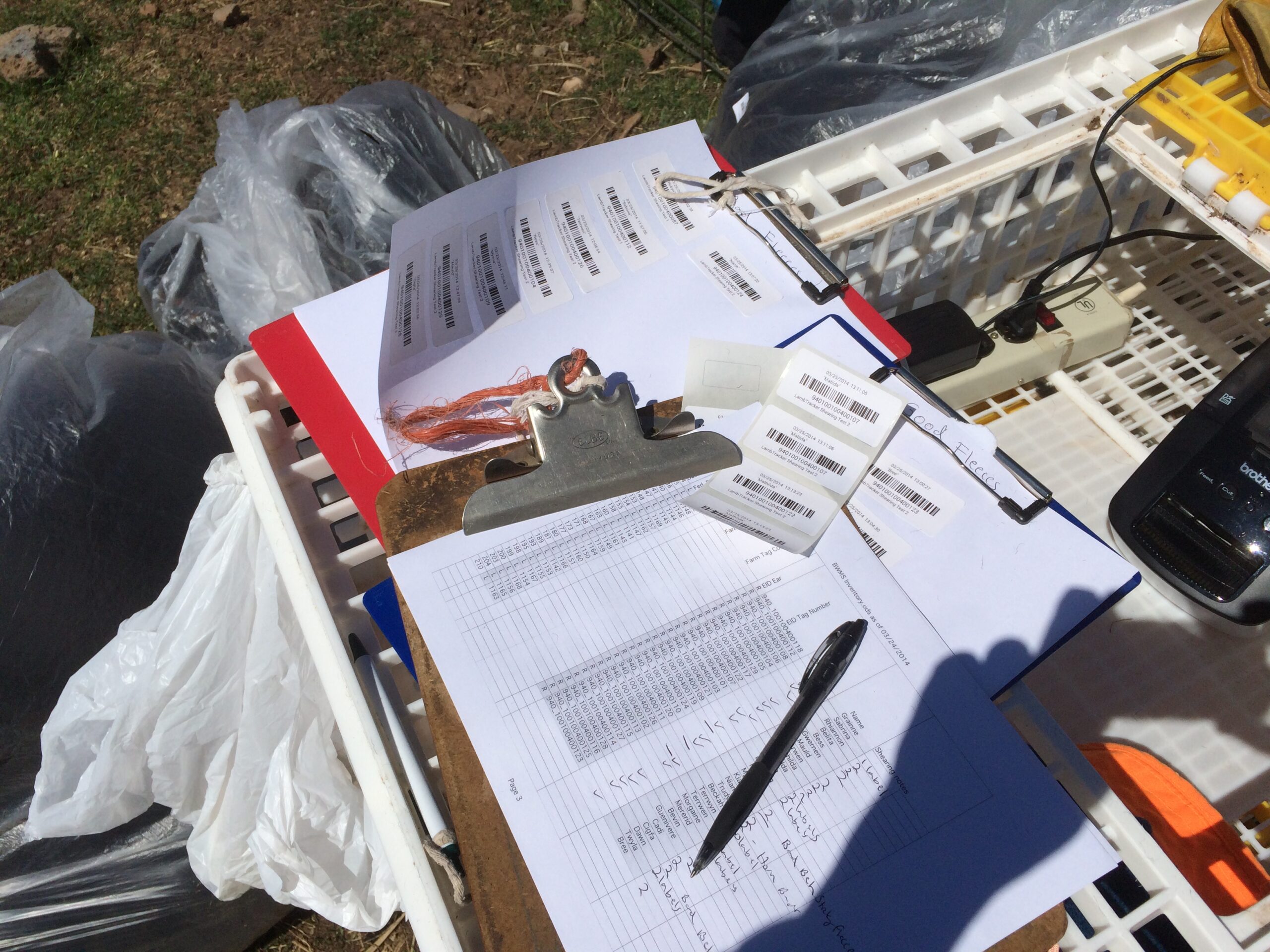Note: this blog post was originally posted on lambtracker.com and has been moved here for preservation. Some information may be outdated.
Last week, we had the first field trial of the shearing and sheep management modules. We learned several things that we’ll incorporate into LambTracker®.
First, during shearing, it was too much effort to use checkboxes for notes about each sheep. It slowed things down way too much. By the second set of sheep, I had created a paper form with checkboxes. We used the Print Labels function and set it to print two labels for each sheep scanned. I could attach one label to the shearing sheet, check off the boxes for that sheep, and use the other label for the fleece bag. This worked well.

Data entry time back in the office took a bit longer than I wanted – working on a small screen makes it more difficult. I’m thinking that I can integrate a bar code scanner to scan the printed labels and bring up sheep records with check boxes on-screen. That module is being designed and planned now.
Second, the workload during vaccinations and worming was too high. I do not yet have the group medication modules written on desktop, so the only way to add a medication record is to do it individually per sheep. The LambTracker® standard protocol of clicking to scan, then scanning, then manually looking up a sheep became cumbersome quickly. However, if we set it to always do an automatic scan and lookup, there’s a risk that a second sheep will get scanned. That would make the data entry screen change before the data for the previous sheep is saved. I’m still struggling to figure out the best way to handle that. I personally like the multi-step method, as it prevents erroneous or missing data from being entered, but the trade-off is that it’s much slower. I’m considering a user option to set the mode, but I haven’t worked out how to do that yet.
Third, there’s the concept of notes about a sheep. Notes are permanent records, and I’ve added a number of predefined notes that can be attached. Examples of notes include the date shorn, fleece data, behavior notes, and udder status. It became clear during this exercise that I needed to be able to attach several notes to a single sheep at a time. So, I made a change to the database to implement up to five predefined notes at once. Now I’m in the process of adding those note options to all places where there’s a “Take Note” button.
The Lambing module is undergoing bench testing now, but we won’t get to test it with live sheep until later this month. I’ve made one initial discovery: there needs to be a simple way to add a tag or other ID to an existing lamb. That’s probably going to be added to the Lookup Sheep module.
Data entry is also proceeding well. I have 17 years of past data on our flock to enter. I’ve started developing blank LibreOffice spreadsheets that we can use to collect data for various sheep tables. The procedure is as follows: I enter the data into the spreadsheet, save the file as a CSV, then use our CSV to SQL tool to create insert and update statements. Finally, I copy and paste the statements into Firefox’s execute SQL window and run them. So far, it’s working well.
My existing records are in a huge LibreOffice spreadsheet, but I combined things in some cells that occur in multiple tables in the database. Some parsing needs to happen to make it all work. That’s why we need separate blank spreadsheets for each table entry. I’ve started putting a background color of green in my main spreadsheet for all cells where data has already been transferred. This makes it easier to see what’s left.
LambTracker® was designed so you don’t have to enter data in order. Instead, you can start wherever you want and enter back data over time. This method has advantages and disadvantages. One advantage is obvious: no huge initial data entry task. One disadvantage is that you’ll need to go back and update individual records with this approach. For example, when I add a sheep, I do not require that a sire and dam be listed. However, once those sires and dams are added to the database, I’ll need to go back in and fix any entries that should include those sires and dams. It’s not hard, but it can be tedious. The method a flock owner chooses depends on how much back data they have and how much info they want added to their LambTracker® database. In my case, we want our entire flock history in LambTracker®, so we’re entering it slowly as we’re able.
